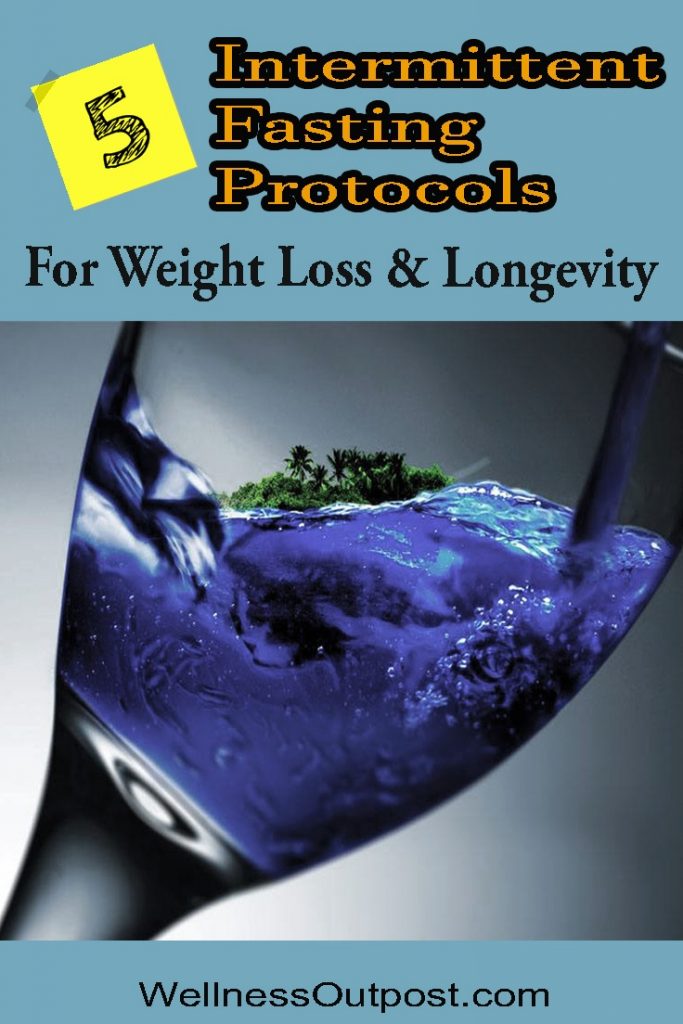Intermittent fasting protocols have become popular among health conscious people. Fasting is an old practice that is shared by various cultures and religions. Intermittent fasting (IF diet) falls under the umbrella of fasting; it is a way to cycle between two states: Eating and not eating during a predefined period of time.
In the last 50 or so years, chronic diseases such as diabetes, cardiovascular disease, and Alzheimer’s disease, became more prevalent in almost all cultures, making people question what they eat and how frequently they consume nutrients.
Post Contents
Introduction: What is intermittent fasting?
Fasting and intermittent fasting (IF) go hand in hand. Intermittent fasting is a term given to a fasting regimen which cycles between eating and not eating. Eating and then not eating for 16 hours is an example of an intermittent fast.
Water is always allowed on this type of regimen, and so are very limited caloric drinks such as coffee or tea, but no foods are consumed.
Some people limit their liquid calories to fewer than 50 during their intermittent fast, and others do without any calories at all.
Fasting is not new
The history of fasting goes back to early times. The ancient Greeks used to fast, and many religious groups test their devotion and willpower by depriving themselves of certain foods and drinks at certain times during the year, including Christians, Muslims, Jews, and Buddhists.
Fasting during Lent for Catholics prohibits meat and other specific indulgences while allowing water consumption; fasting during Ramadan for Muslims prohibits anything that can be digested (including water) from sunrise to sunset and lasting for one month each year.
In the last few years, fasting for health purposes was resurrected back, making it more popular than ever before.
Although the aim here is to do intermittent fasting for weight loss, the focus of this post will also include doing intermittent fasting for health reasons.
What is the purpose of intermittent fasting?
The main purpose of an intermittent fast is to normalize the insulin level in the blood. Some use it for weight loss; others follow it to get into a state of ketosis where the body uses fat for energy instead of carbohydrates.
In a nutshell, fasting lowers insulin.
Fasting allows the normalization of blood glucose, thus switching the body from a carbohydrate burning machine to a fat burning machine for energy.
In recent years, diets that mimic a fast became popular. Dr. Valter Longo pioneered his version of the 5 day Fasting Mimicking Diet (FMD) with a specific ratio of fat and carbs+protein, as well as a line of commercial products.
The exact way of doing a simple fasting mimicking diet is unique in the sense that FMD only lasts for 5 days each month (some do FMD every other month).
The benefits of a simple version of a diet that mimics fasting are numerous. They include rebooting the immune system, losing weight, and improving longevity through the prolonging of the life of cells.
We will not discuss the FMD here, since we already wrote about it. Here, we will discuss the other popular types of intermittent fasts. This is not to say that all of these intermittent fasting protocols are suitable for everyone.
Make sure to consult with your doctor if you have any question about whether or not any of these intermittent fasting protocols will suit you.
Will I be hungry if I intermittent fast?
Being hungry during the intermittent fasting phase really depends on what you ate during your last meal and on your level of ketosis (this is a metabolic state that allows ketones to break down fats in order to use them for energy).
Not everybody can break down fats easily. If you eat more carbs than fats, then your body breaks down carbohydrates for energy.
Usually, people who are on a paleo diet (high protein, medium fats, and low carbs) or who are following a ketogenic diet (high fats, medium protein, and low carbs) will have no problem doing a long intermittent fast. This is because their fat consumption is higher than their carbs+protein intake. Fats keep the body satiated for longer periods of time.
It is no longer a secret that loading up on carbohydrates will elevate the sugar levels in your blood and will make you hungry. If your last meal was full of carbohydrates, then you probably will get hungry faster.
Tips for fasting for vegetarians, vegans, or people who follow the plant based diet and who want to do intermittent fasting:
- You want to make sure that your last meal of the day (before you start your food fast) has a good amount of fat in it, so that you don’t feel hungry for a while after you wake up the next morning.
- You can eat avocados because they have amazing benefits and a high amount of fat. You can also consume plant based foods that have good fats (i.e. walnuts, sunflower seeds, coconut oil, coconuts, Chia seeds, and flax seeds, etc.)
- Whether or not you will be able to sustain your fast for about 14-18 hours is unknown, but it will be worth a try.
Without further ado, here are the most popular intermittent fast protocols.
The 5 most popular intermittent fasting protocols
Now that you have a good idea what to expect, let’s take a look at the top 5 most common fasting methods.
#1: The “skip a meal” fasting-mimicking diet (14 hour fast)
This is a daily intermittent fasting protocol. It is the most common type of intermittent fasting methods and the best fast. It is the method we recommend.
Method
You skip a meal during the day (i.e. breakfast) and you go without food for an extended period of time.
If you’re healthy and don’t have a reason to eat frequently, you will benefit from giving your body a break.
By skipping a meal, you will reduce our blood sugar spikes that can lead to insulin resistance and give your digestive system a break. In addition, a good 16 hours fast can allow your growth hormones and your cell regeneration to kick into maximum gear, thus the longevity factor when doing a fasting protocol.
The time of your fast can be anything between 14 hours, 16 hours (great if you can get there), to 18 hours. Here’s an example:
You are done eating at 7 P.M. tonight. Your next meal will be the next day around 11 am. That would be a 16 hour fast.
If your lifestyle demands that you eat normally during the day, you can incorporate this “skip a meal” fasting practice on the weekends.
#2: The “one meal per day” intermittent fasting (24 hour fast)
Instead of skipping a meal, this intermittent fasting method incorporates only 1 meal during the day.
A lot of people prefer the one meal per day approach, or the meal to meal practice, but this is harder to do than the “skip a meal” intermittent fast.
Method
You would eat one time a day (for example your one meal would be lunch or dinner) and you would skip eating anything solid until the next day (until next lunch or dinner). That would then be a 24 hour fast.
In order for you to be able to accomplish this, your one meal must be full of good fats so that you don’t go hungry.
The “one meal per day” cheat drink recipe: This is one of the best fasting tips if you’re doing a one meal per day fast. this cheat drink will help you maintain your energy.
- 2 tablespoon of coconut oil.
- 1 teaspoon of Celtic salt or a dose of electrolytes.
- Add all to 16 oz. of boiling water.
- Sip on that water until you’re ready to have your meal.
#3: Long block of a 4 days minimum of fasting
This is a very fast way to get into ketosis, which you will probably attain in about 3 to 4 days. However, because fasting for 4 days can be harsh, it is not a method for everyone!
Method
This is when you eat your regular food for a while, and then you don’t eat for a period of time of about 4 days.
- You must drink liquids that are full of fats, and intake water with electrolytes into your body. The electrolytes will help decrease or eliminate the flu symptoms and the headaches. Solid foods will not be allowed.
- Depending on how much you have loaded your body with carbs prior to undergoing this fast; you may feel nauseated and may have a headache because your electrolytes will get depleted from your body. Make sure to take in your electrolytes. If you don’t have electrolytes, just make sure to add salt to your drinks. Sodium has electrolytes that will allow some of the exchange of ions in your cells, lowering uncomfortable symptoms.
- Your hunger signals will increase on day two or so. If you can hold on until after day 2, you will see an increase of energy and your hunger will decrease.
- Most likely on day four you’ll be in ketosis, your brain function will be crystal clear, and your energy will return. Your headache (if you have one) will subside and you can resume a normal life.
- On day 5 or so, your hunger may not even be noticeable.
This is not really a method we recommend. It is very harsh, and it is not necessary to get the health benefit of intermittent fasting. Just stick to the “skip a meal” or the “one meal per day” protocols.
#4: The “on and off” long block of fasting of 7 days at a time
You will be on a 7-day “on and off” terms with this type of fasting.
Method
What this means is that you fast for seven days and then you break the fast for seven days then you come back and fast another seven days and you break the fast for the next following seven days so it’ll be on and off type of fasting.
This might be therapeutic for people with poor health, but it’s not really a sustainable way of doing intermittent fasting.
Always check with your doctor if you have any question about the validity of any of these regimens.
#5: The long extended fast of 21 days or more
This is probably the least favorable way to intermittent fast.
Unless you are working with a doctor, do not venture into this type of fasting protocol.
Method
- You will be super hungry on this diet, so it’s not really for everybody.
- It could be healing for many diseases, but make sure to consult with your holistic doctor, nutritionist, or medical doctor before embarking on such a regimen.
- The main intake is simply water, but this is not good. You, at minimum, need to add electrolytes or salt (2 teaspoon of Celtic salt or Himalayan salt) per day to your water to keep your cells from failing.
- If you see an explosive bowel movement after a period of time doing this long intermittent fasting protocol, then your liver is most likely detoxing.
How coconut oil can help during long 4+ days of intermittent fasts
It is important to know how to fast safely. Coconut oil may help you keep your energy in check while on long prolonged fasts.
Coconut oil has mostly saturated fat along with vitamins K, E, and iron. It has an antioxidant compound called phenolic acid. There are two types of coconut oil.
- The cold pressed type: This is the preferred option. A good type would be an organic cold pressed coconut oil. It is processed at lower temperatures (around 120 degrees Fahrenheit), preserving the most amounts of nutrients.
- The expeller pressed type: It is still a good chemical-free way to extract oils, where the oil is pressed and squeezed out of the coconut. It is processed at a higher temperature (in excess of 200 degrees Fahrenheit) and it could lose some of the fibers and nutrients.
The bottom line on fasting protocols
The five day Fasting Mimicking Diet is just that: A calories restrictive diet that should last 5 days back to back in one week, and only one time per month. It should be sufficient to help you lose weight and reverse a lot of health conditions. However, if you feel extra healthy and want to prolong your fasting for an extended period of time, then you can try out other types of fasting protocols, such as:
- The “skip a meal” fasting-mimicking diet.
- The “one meal per day” intermittent fasting.
- Long block of a 4 days minimum of fasting.
- The “on and off” long block of fasting of 7 days at a time.
- The long extended fast of 21 days or more.
Always consult with your doctor if you have any other health conditions before embarking on any restrictive diet.
Be well.






























